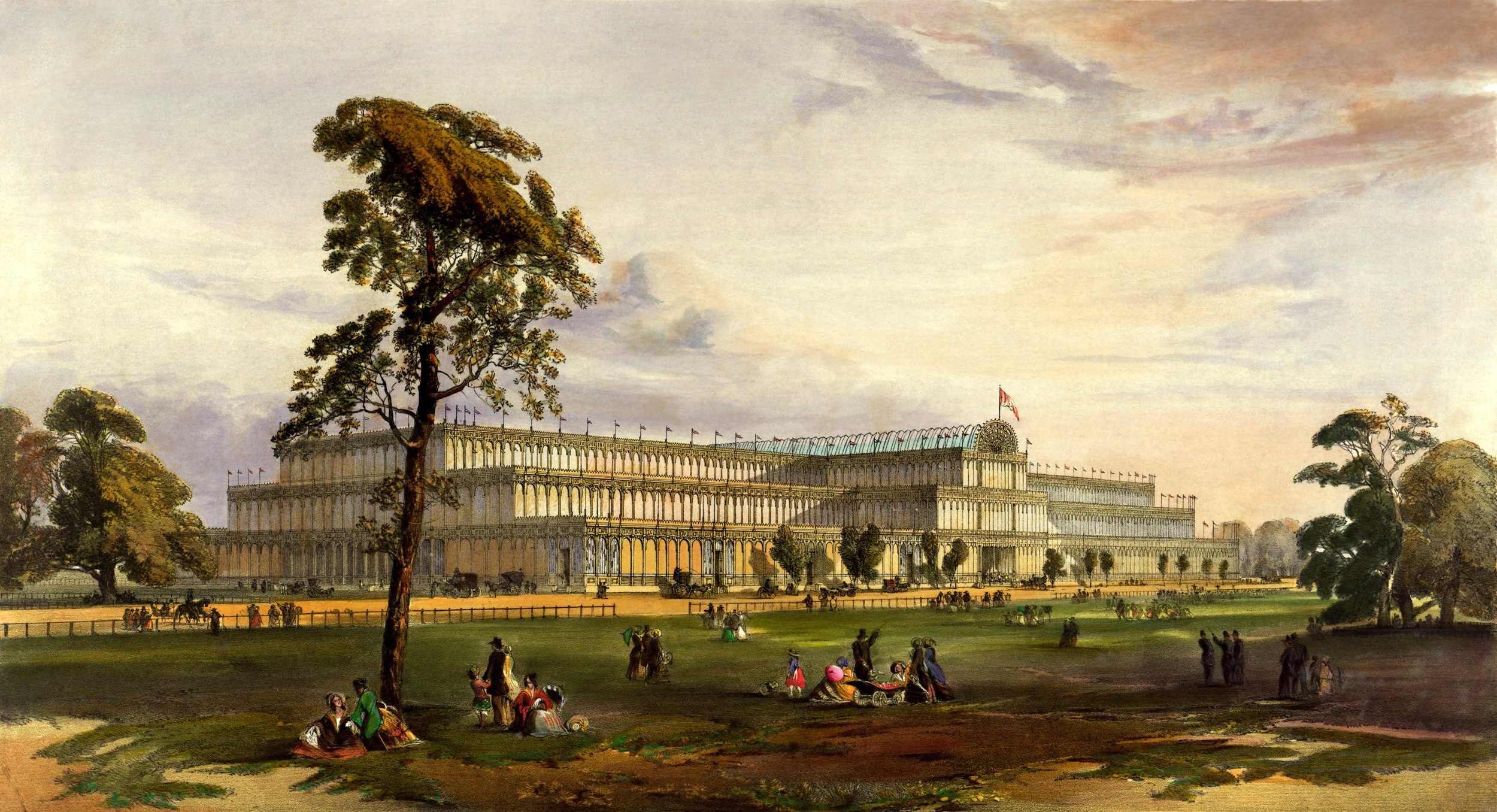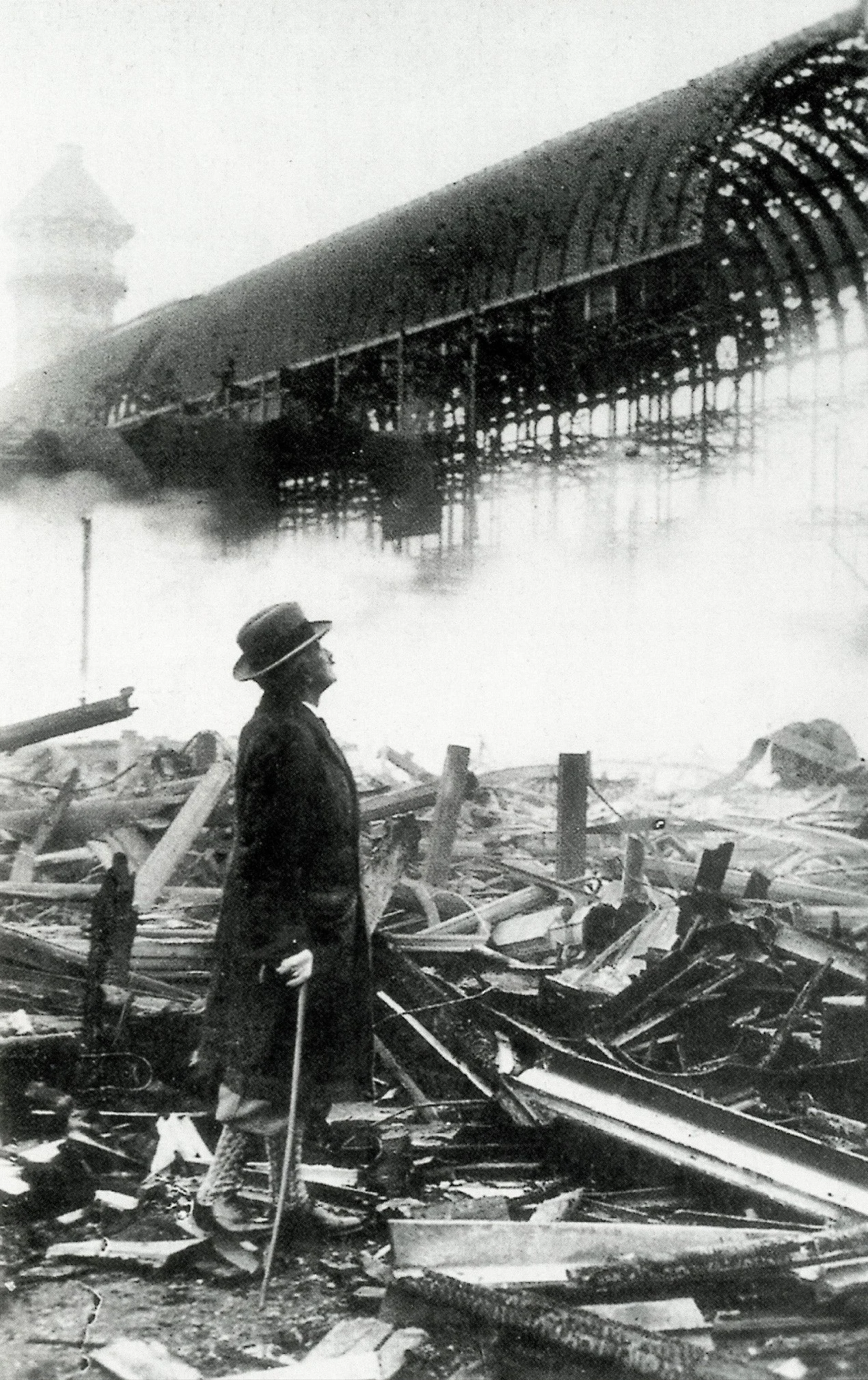
The Crystal Palace
London, England 1851, Architect: Sir Joseph Paxton (1803-1865)
England’s Prince Albert believed that technology was improving the human condition and that Great Britain could lead the world into a brighter future. Industry would provide a way for artists to apply their talents to make affordable, quality goods for middle-class consumers. From this optimistic vision of industrialized society arose the idea for a massive exposition in which the new manufactured goods of all nations would be on public display.
Nothing like this had ever done before - of the 245 proposals submitted in the Spring of 1850 to design such a place for this to occur, none were selected as they were too expensive. It was not until June 1850 Henry Cole (1808-1882), the assistant record-keeper at the Public Records Office, sought out Joseph Paxton, the genius behind the Chatsworth Conservatory. In less than two weeks of agreeing to submit a proposal, Paxton had committed to a paper sketch for a revolutionary modular structure with a footprint of 19-acres, approximately 25 times the square footage of Chatsworth. According to Alan and Nancy in their book, The Conservatory: Gardens Under Glass, “…the engineering breakthrough that made possible the construction of this unprecedented structure occurred to Paxton while he was working with a plant: the giant Victoria amazonica water lily. Recently discovered by European botanists, this water lily…has huge leaves reaching 9 feet in diameter…[inspiring] the structural design of the Crystal Palace.”
Photo courtesy of the British Library
This monumental and transformative project required vast quantities of materials, particularly glass - many thousands of large, thin, yet strong panes. Until the 19th century, glassmakers followed a process of spinning glass to make disks, then cutting the disk into small panes we would associate with the stained glass of great cathedrals or the leaded windows of humble Tudor taverns. It was the relatively new technique created in 1832 by the Chance Brothers glassmakers that made large glass panes possible - especially to meet the requirements for the Crystal Palace. To complete the structure, the plates of glass had to be a full 12 inches larger than had ever been made before and manufactured on such a scale that production would equal 1/3 of Britain’s entire yearly glassmaking output!
Remarkably, the Great Exhibition of the Crystal Palace opened on time and under budget. Queen Victoria and Prince Albert opened the exposition in a grand ceremony, and Victoria and the children often visited the exhibition. Although only open for 6 months, the Great Exhibition was wildly successful, attracting more than 14,000 exhibitors, 6,000,000 visitors from around the world, and turned a profit of £186,000 which is equivalent to some £18,000,000 today.
After the scheduled 26-weeks the Crystal Palace was relocated to Sydenham Hill. Enlarged, it was a popular venue for concerts, exhibitions, and sporting events for more than 80 years before sadly it burned down in the great fire of 1936.
The succes of the Crystal Palace inspired a new wave of conservatory building around the world. Conservatories became accissible to the general populace as shopping malls, restaurants, swimming pool enclosures, and indoor garden courts. In London, in an age when pollution generated thick fogs, conservatories provided an escape to a more idyllic environment.
- Alan Stein, The Conservatory: Gardens Under Glass
Photo Credits: Gallery Reel 3 Images: Special Collections and the University if Maryland Libraries; Hornbake Digitization Center


![03_Cons_ch3_045[1B].jpg](https://images.squarespace-cdn.com/content/v1/5f11b7e4e3277041fd2580c6/0ceda59a-5309-4e5b-8415-68b78a19a6b0/03_Cons_ch3_045%5B1B%5D.jpg)
![03_Cons_ch3_047[1B].jpg](https://images.squarespace-cdn.com/content/v1/5f11b7e4e3277041fd2580c6/94d2ea7a-1a59-4fb6-b6e8-ce6a8747066d/03_Cons_ch3_047%5B1B%5D.jpg)
